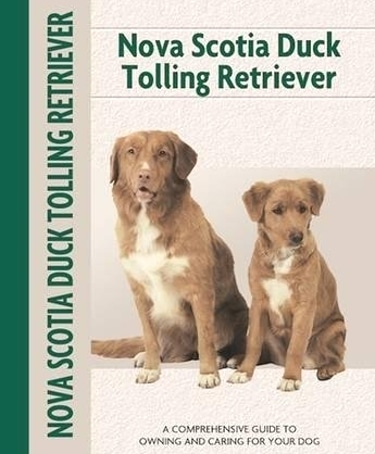
The Nova Scotia Duck Tolling Retriever is a medium sized, muscular and balanced dog. He is alert, hardworking and always ready to spring into action. Today’s breed originated in Canada in the early 19th century, however the exact origin of its ancestors are not known. Some claim they were crossed with other types of retrievers, spaniels and setters and possibly with Farmcollies and spitzes.
The purpose of Nova Scotia Duck Tolling Retrievers – as the part of the name suggests – was to lure or entice waterfowl within close range for the hunter. Tollers would frolic in the water close to shore piquing the curiosity of waterfowl and eventually drawing them in close enough shooting range for the hunter. The Toller then retrieves the dead or injured game.
The Nova Scotia Duck Tolling Retriever was admitted into the Canadian Kennel Club (CKC) in 1945. Tollers were placed in the AKC Miscellaneous Class in 2001 and fully recognized into the Sporting Group in 2003.
Height: The height for a male Nova Scotia Duck Tolling Retriever at withers is between 18-21 inches (45.7 – 53.3 cm) and for females between 17-20 inches (43.2 – 50.8 cm).
Weight: The weigh for a Nova Scotia Duck Tolling Retriever is between 37 – 51 pounds (17-23 kg). Female Tollers weigh slightly less. Weight should be in proportion to height and structure. The Tollers’ length should be just a bit longer than its height.
Coat Type: The Nova Scotia Duck Tolling Retriever has a water-repellent double coat that is medium in length. Both the outer and undercoat are soft – the undercoat is also dense. There may be a wave on the Toller’s back, otherwise its coat is straight. Basic grooming includes brushing the coat a few times a week.
Color: The color of the Nova Scotia Duck Tolling Retriever’s coat can be any shade of red or orange. There is usually at least one white marking on the Toller which can be found on any of these areas: the feet, tip of its tail, chest and blaze.
Temperament: The Nova Scotia Duck Tolling Retriever is very intelligent, affectionate and devoted. He is also patient and gentle – characteristics which all make him a wonderful family pet and companion. Tollers are active and playful and especially love playing fetch since they are natural retrievers. They should also be taken on daily walks for additional exercise. Nova Scotia Duck Tolling Retrievers are alert and easy to train. This breed is wary of strangers and will bark at those he does not know, making him a good watch dog.
Health Concerns: Nova Scotia Duck Tolling Retrievers are generally healthy although there are health issues which may affect them such as PRA (progressive retinal atrophy), Addison’s Disease (endocrine or hormonal disorder) and hip dysplasia. The average life expectancy of a Nova Scotia Duck Tolling Retriever is between 13 – 14 years.
Special Interest:
• The Nova Scotia Duck Tolling Retriever is the smallest of all retrievers.
• The Nova Scotia Duck Tolling Retriever is also called ‘Toller’ for short.
• The Nova Scotia Duck Tolling Retriever is was originally called Little River Duck Dog – which comes from the name of the district of his home – Little River District of Nova Scotia.
Classifications:
AKC: Sporting Group
ANKC: Group 3 Gundogs
CKC: Group 1 Sporting Dogs
FCI: Group 8 Section 1 Retrievers
KC: Gundog
NZKC: Gundog
UKC: Gun Dog
 Kennel.com – Complete Guide to Dogs The Dog Lovers Guide
Kennel.com – Complete Guide to Dogs The Dog Lovers Guide
